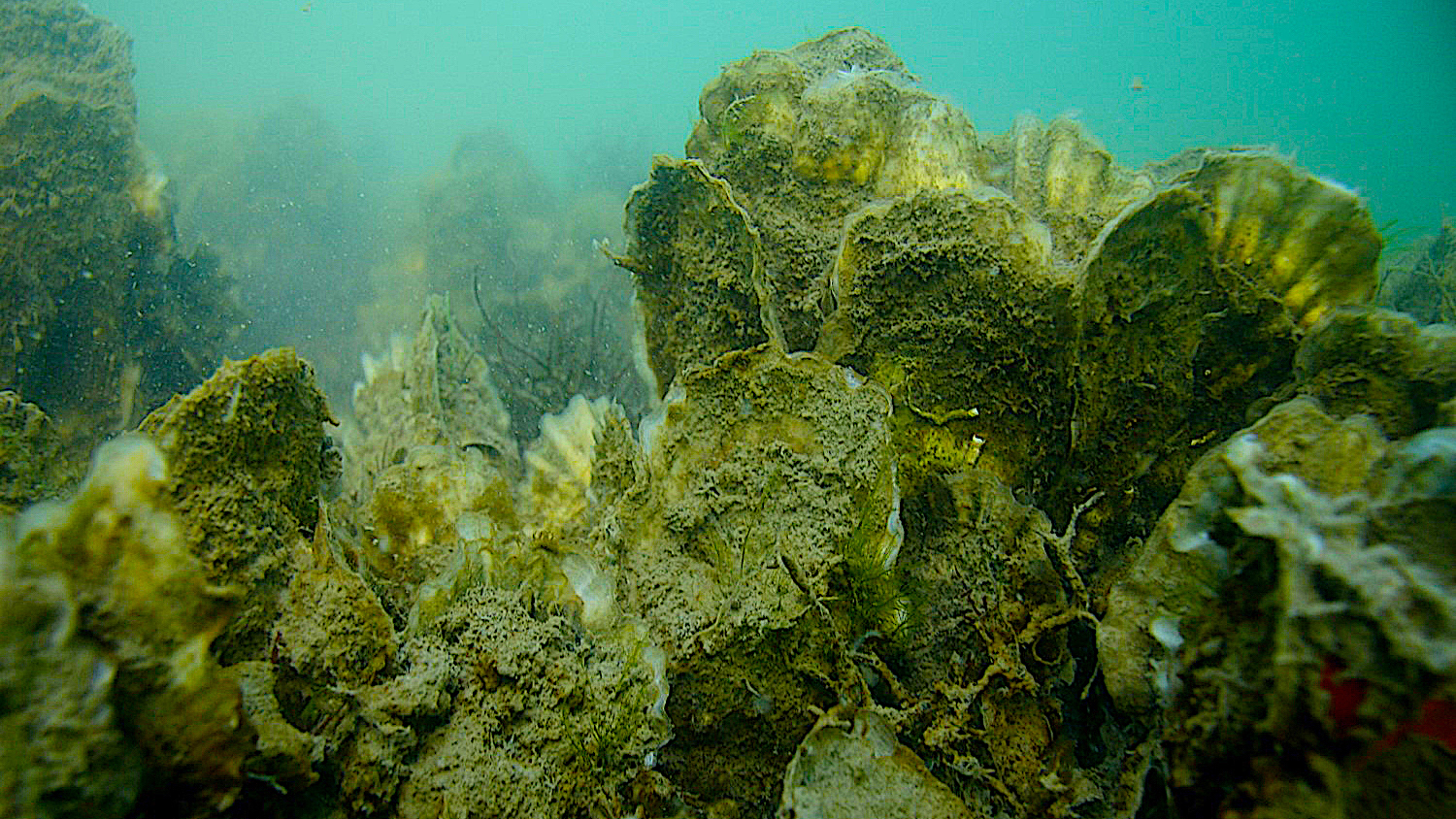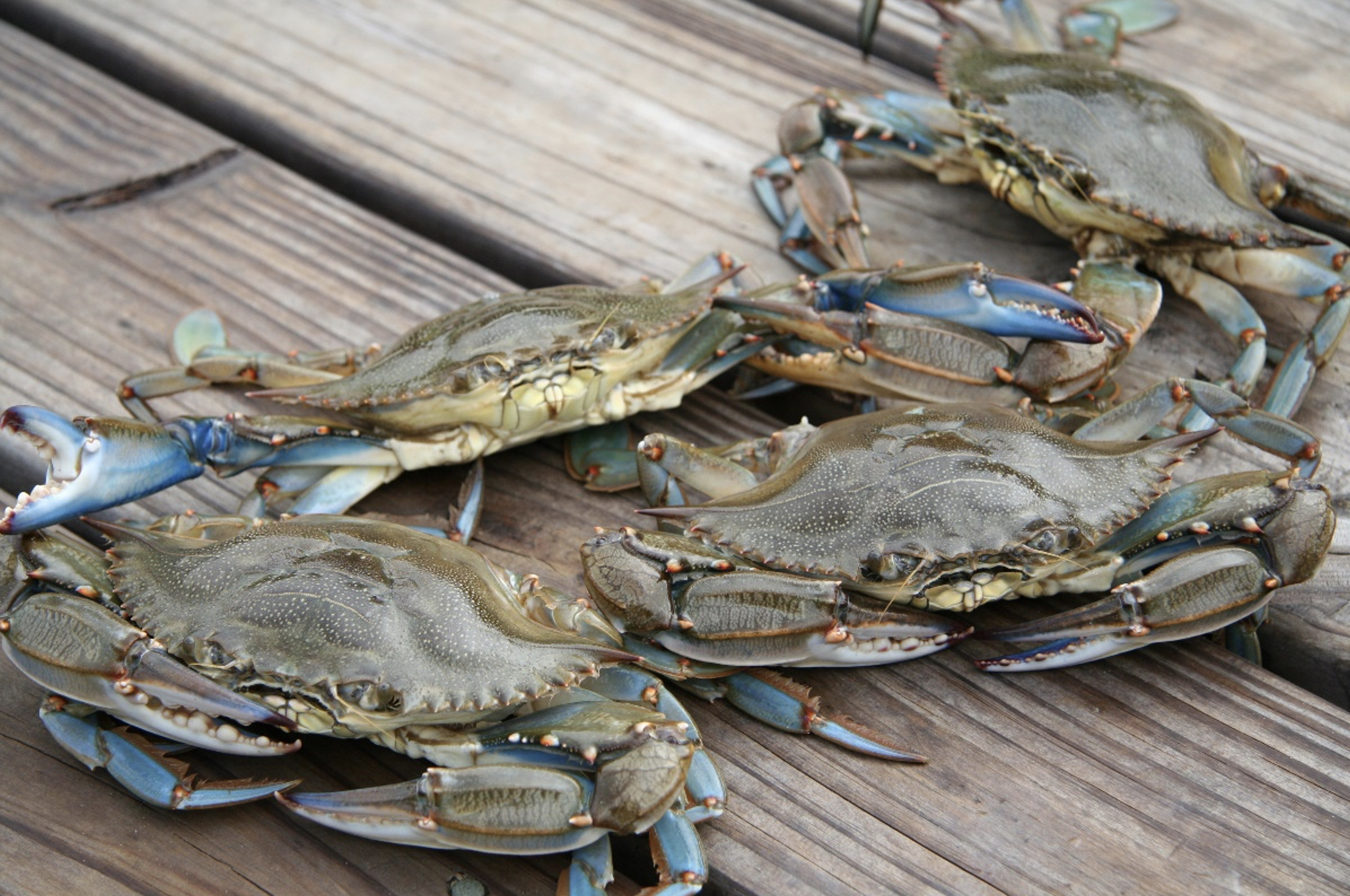How Have Oyster Reefs Changed Over the Last Six Decades?

In a crucial North Carolina estuary, scientists combed through historical data to better understand how biodiversity and seafood supply have changed — and will continue to change.
Research Need
Like other coastal and estuarine environments, the Newport River Estuary in North Carolina is vulnerable to the impacts of human activities. Rising sea levels, storm water drainage infrastructure, and dredging channels for ships, for instance, can change the estuary’s tides and the saltiness of the water, which in turn affect plants and animals, including oysters.
The oysters and other species in the estuary play an important role ecologically and economically, in part because they create habitats for other organisms and supply seafood.
Scientists have been studying the Newport River Estuary, which sits next to multiple marine labs and a state port, for over one hundred years. In this study, researchers set out to investigate how oyster reefs in the estuary have changed over time.
By looking at historical data, can we get a sense of what the future might hold?
What did they study?
In 1955 and 1956, scientists collected samples from different sites in the Newport River Estuary and brought them to a laboratory to identify species living in them. Over half a century later, from 2013 to 2015, researchers revisited these sites and collected new samples to compare with historical data. The team also looked at records of the estuary’s salinity and reef distribution, some of which dated back to the 1920s and even 1880s.
After data collection, scientists identified patterns in communities of species that live in oyster reefs in the estuary.
What did they find?
The diversity and number of species in the oyster communities have decreased between the 1950s and the 2010s. These differences are linked with the estuary’s salinity levels, which have risen over time. The salinity of the reefs closest to the Beaufort Inlet did not increase as much as the reefs further upstream.
North Carolina’s two oyster reef types — subtidal (below the water’s surface) and intertidal (above or below the surface, depending on the tide) — were affected differently over time.
Scientists found that oyster communities in the 2010s tended to cluster around intertidal reefs, closer to land, more than they had in the past. This shift occurred because certain species, including oyster predators, had expanded farther up into the estuary. Subtidal reefs up the estuary had degraded due to environmental conditions, which made them more favorable for aggressive, reef-destroying species.
Anything else?
Changes to oyster communities in the reefs, along with water quality issues, have shrunk the areas suitable for oyster habitats. As a result, the area where humans can harvest oysters has decreased by over 75% since scientists first explored the Newport River Estuary reefs decades ago.
So what?
Environmental changes and habitat loss, or “coastal squeeze,” threaten species that live at the boundaries between land and sea. The shrinking of harvestable oyster areas raises concerns for biodiversity and seafood supply.
This research highlights the importance of protecting and restoring critical habitats like the Newport River Estuary. In doing so, scientists and communities can help to ensure the survival of species like oysters, which are critical to the surrounding ecosystems.
Reading
Tice‐Lewis, M., Zhang, Y. S., Redding, S. G., Lindquist, N. L., Rodriguez, A. B., Fieseler, C. M., Walker, Q.A., & Fodrie, F. J. (2022). Coastal squeeze on temperate reefs: Long‐term shifts in salinity, water quality, and oyster‐associated communities. Ecological Applications, 32(5), e2609.
By Maya Afilalo.
lead photo credit: NC DMF.
The text from Hook, Line & Science is available to reprint and republish at no cost, but only in its entirety and with this attribution: Hook, Line & Science, courtesy of Scott Baker and Sara Mirabilio, North Carolina Sea Grant.
- Categories:



